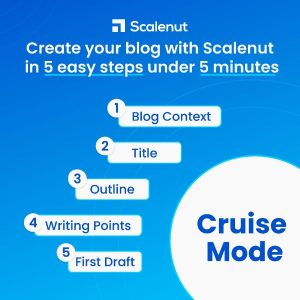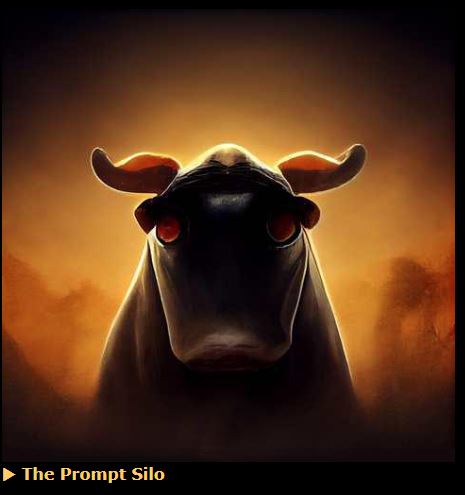Optimize SEO in Page Titles, Meta Tags, and More

Optimize SEO in Page Titles, Meta Tags, and More
Discover how to enhance SEO in page titles, meta tags (description, keywords), content HTML, and image alt tags for better visibility.
Reminder: According to recent research (conducted by respected companies), more than 90% of all those who go online to find something use a search engine. Another conclusion: if you are not on the first page of search results, more than 60% of Internet users will not find you!
The content of this page (& navigation also):
A. How do you optimize your page content for SEO? ⬇
1. Page Title ⬇
2. Meta Description ⬇
3. Meta Keywords and Keyword Density⬇
4. Page Content – Page HTML ⬇
5. Image ALT tags ⬇
6. Now, let’s examine the simplified Page HTML script I mentioned above ⬇
B. The importance of the Visibility Score and following the syntax. ⬇
1. What is the SEO Visibility score? ⬇
2. What if we don’t follow the Title, Meta Description, Keywords, Img Alt, and other syntax? ⬇
3. How do you improve your website’s SEO visibility score? ⬇
A. How do you optimize your page content for SEO?
You don’t need to be an SEO expert to know these definitions. Everyone who deals with Internet text writing, image uploading, promotion, etc., at some level, should at least know their meaning and possible use. The advantage is that if we know this, we no longer need to use an SEO service to prepare it (but certainly to check it). If, for some reason, we still use some SEO service, we can monitor its operation more efficiently.
Starting from all this, let’s first familiarize ourselves with the meaning of the terms and why they belong to the most important parts of a website from an SEO point of view! You will find simplified SEO Basics here.
You can see what it looks like inside an HTML page:
1. Page Title
The Title of your Page (site or blog) is essential to examine search engine rankings. It should contain the most important, unique keywords (3 to 5). When people use any search engine during the search query, they type in their keywords to find the desired product or service.
It would be best to use the exact keywords because you want to be found online. If they and your keywords match, and you are on the first search results page (SERP), you will be in a “winner” position. The best position is if your Domain Name and its Title are being watched (“exactly matching domain name”).
If it doesn’t match exactly, SEO optimization is a bit more complicated, but not so bad: the content must be related to the title.
How long should the Title be?
Max. 70 characters (best fit 55-70).
Its location: Within the <head></head>.
How? Please find it in the example below (simplified) ⬇.
2. Meta Description
However, this is not as important a factor as the Page Title, a suitable Meta Description will help people understand the content of your site or blog. A poorly constructed Meta Description may warn off your forthcoming visitors so they will choose another site instead of yours. Meta Description must contain the exact keywords you used in your Title.
How long should the Meta Description be?
Some say max. 140 characters. Others say max. 160 characters. The most important thing is that it matches the Title and the content provided later.
Its location: Within the <head></head>.
How? Please find it in the example below (simplified) ⬇.
3. Meta Keywords and Keyword Density
The relevant use of keywords and key phrases is essential because the whole content of the page will be based on them. Try to use the most relevant keywords that are close to your niche and accurately describe your content. Don’t just use a single keyword, but keyword phrases with 2, 3, or even more tags. Avoid keyword stuffing and duplicate keywords, as they have a detrimental effect on search engines.
Keyword density:
The exact keyword or phrase can appear only once in the headings and the description. I also must highlight the importance of the well-chosen keyword density (3-5% related to the complete content).
Its location: Within the <head></head>.
How? Please find it in the example below (simplified) ⬇.
4. Page Content – Page HTML
This is the central part of your Page. Your carefully written content must be relevant to your Title and Description, and vice versa. You should highlight your keywords in your content, so you would want to use the so-called Heading Elements (H tags such as H1, H2, H3, H4, H5, and H6) and other techniques such as bolding.
Using well-constructed content will not only attract visitors, but you will also be able to sustain them.
How long should the Page Content be?
It depends on the story you write. However, you should be aware that, for example, if you are creating a technical description, content that is too short will not be enough to talk about the parameters and express your opinion. On the other hand, if it is too long, most of the readers will get bored and leave your page.
Its location: Within the <body></body>.
How? Please find it in the example below (simplified) ⬇.
5. Image ALT tags
Images look lovely on your website, but search engines can not see how beautiful they are in reality. The Img ALT Tag (ALTernative Text) was created to interpret what the image represents to search engines. Not every search engine indexes the text found in this tag, but they love it, especially Google (I note: all this for a reason).
Why is it vital to use Img ALT Tags? The answer is simple:
Nowadays, image search (so-called metasearch) is the most widely used variant of visual search. That is, you are specifically looking for an image that points to some product or other information. However, if that image does not have the name or information you are looking for, you will most likely get the wrong information back.
That’s why it’s essential to use the proper Img ALT Tag and the uploaded image with the name it shows visually.
Note: However, this type of search has some drawbacks. It is often quite challenging to define precisely what you are looking for. However, if you know its name (this is where the importance of the keyword comes in), then you are very likely to find him.
In this case, you are the seller, so try to enter the name of your image as you would in your search for it.
Try to figure out how others might search for your product. Then, it is very likely that others will find it, too.
What does an Image ALT Tag look like?
Find the example below (simplified).
6. Now, let’s examine the simplified Page HTML script I mentioned above:
<html>
<head>
<meta http-equiv=”content-type” content=”text/html; charset=utf-8″>
<title>Your Site Title</title>
<meta name=”description” content=”What is Your Site about”>
<meta name=”keywords” content=”Your Keywords”>
</head>
<body>
<h1>Your Title of Your Content</h1>
Text (Your Content)
<h2>Sub Title</h2>
Text (Your Content)
<h3>Sub Title (if exists)</h3>
Text (Your Content)
<!– Image location and its Alt Tag: –>
<img src=”https://your-image-location(.jpg, .png, gif, webp, etc.)” alt=”Name of the Image”>
<h4>Sub Title (if exists)</h4>
Text (Your Content)
<h5>Sub Title (if exists)</h5>
Text (Your Content)
<h6>Sub Title (if exists)</h6>
Text (Your Content)
</body>
</html>
Note: this is “<!– The Comment Section –>” above and will not be translated or interpreted by HTML. Only you can see it.
Once again, I draw your attention to the fact that this is only a presentation. An HTML script can and does contain other things. How to learn HTML? I will make a website about this later if you are interested.
B. The importance of the Visibility Score and following the syntax.
1. What is the SEO Visibility score?
SEO visibility score is a metric that measures how visible your website is in search engine results pages (SERPs) for a set of keywords. It reflects the percentage of clicks your site is likely to receive based on its ranking positions across all targeted keywords.
A higher visibility score indicates that your site ranks well for many relevant search terms, driving more organic traffic. This score helps assess your SEO efforts’ effectiveness and identify areas for improvement. Tools like SEMrush or SISTRIX provide this score, offering insights into your site’s overall search performance.
SEO Visibility was defined also by Searchmetrics.com, which I quote from them:
“What does the SEO Visibility tell us?
Generally speaking, the SEO Visibility is an indicator of how visible a website is in the organic search results when queries are entered into search engines on desktop computers. It is an index which also makes it possible to analyze problems and to identify potential for optimization.
Furthermore, it is possible to compare different domains in terms of their performance on search engines – e.g. thematically similar pages or competitors. It is also possible to make comparisons between winner and loser domains in order to draw conclusions regarding general trends or significant changes in search engine rankings. These often occur following algorithm updates.” – by SEO Visibility Definition – SEO Glossary | Searchmetrics.
2. What if we don’t follow the Title, Meta Description, Keywords, Img Alt, and other syntax?
I will be very brief:
If we don’t follow the syntax, the visibility of our website will decrease drastically. If you use only your pure text content without Meta Tags, the Visibility factor of your site is between 15-30 %.
In my opinion, it is not so difficult to reach 55-70% of Visibility by selecting the appropriate words.
But improving it to reach 75% or above is an art. Why? You can find many other factors, as well. First, to fine-tune your page’s Visibility (and lift its Visibility above 80%), you have to know the defining factors I’ve mentioned above precisely.
On the other hand, even if you are familiar with all techniques, you have to be aware of how tedious they are. Using different tools can help you in this time-consuming process.
3. How do you improve your website’s SEO visibility score?
Improving your website’s SEO visibility score involves several key strategies. Start by optimizing on-page elements such as titles, meta descriptions, and headers with relevant keywords. Ensure your content is high-quality, engaging, and regularly updated to meet user intent.
Enhance your site’s mobile-friendliness and page speed to improve user experience. Build a strong backlink profile by acquiring links from authoritative, relevant sites. Utilize tools like Google Search Console to monitor and address technical SEO issues, such as broken links or crawl errors. Finally, analyze and adjust your SEO strategy based on performance metrics to continually improve visibility.
Summary. Just follow the advice below:
– Apply Interlinks and use keywords as anchor text.
– Develop and Improve title tags and meta descriptions.
– Benchmark top-ranking pages.
– Focus on on-site projects.
– Plan well and leverage your home page as your most powerful SEO tool.
– Add relevant keywords to headlines.
– Aim for master mobile readability.
I trust you can further develop your website based on the information you have read.
Thanks for reading!
▶ This Is THE Immediately Applicable Keyword Researcher Tool!
It’s the only SEO software that helps you find Long-Tail Keywords and create SEO-Optimized Content for your website. Please, watch the small video (4:47 mins) below to learn about how it works.
▶ Scalenut - AI Powered Content Research & Copywriting Platform
Just click here and try an AI Powered Content Research & Copywriting Platform for FREE
▶ The Prompt Silo
Designed to help people become great AI artists with a few clicks. The biggest collection of ideas for prompts, plus AI art resources. The Prompt Silo makes it easy to create unique and high-quality artwork that you own.
See what amazing things can be achieved by AI Artists!



